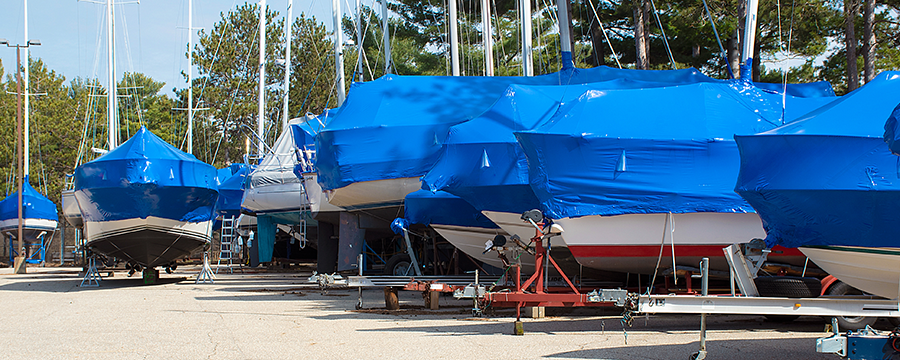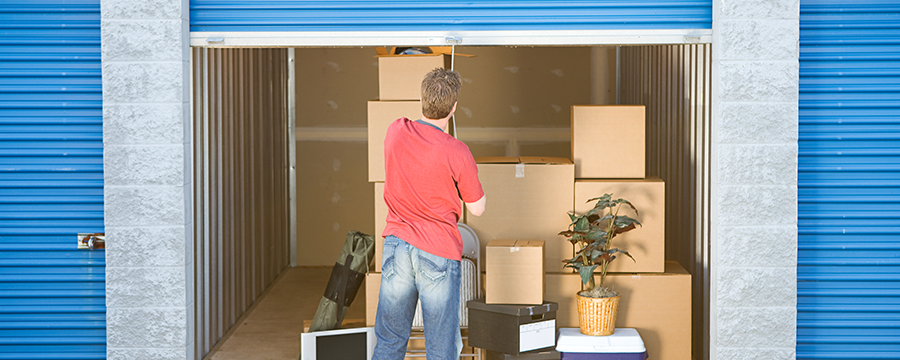Ensuring proper boat storage during the winter months is essential for preserving the condition and longevity of your vessel. The right storage practices can make a significant difference in preventing costly damage and repairs down the line. Depending on your location, you might be able to get away with storing your boat in a shed or garage. However, if you face harsh winter conditions, it’s imperative to winterize your boat to shield it from the elements. Neglecting this crucial step can result in a range of issues, from engine cracks and electrical system faults to ruined upholstery and flooring. By taking these proactive measures, you can make the spring relaunch smoother, extend the life of your boat, and spend more time on the water and less time worrying about potential problems.
- Thoroughly Clean and Organize Your Boat
Before you prepare your boat for winter storage, start by giving it a deep cleaning both inside and out. If you’ve been diligent about keeping your boat clean during the season, this task will be less time-consuming, but it’s never too late to start.
Cleaning the Exterior: Begin with the exterior by applying a cleaning solution and using a microfiber towel to remove dirt and hard water spots, helping maintain the gel coat. Pay close attention to areas where bugs tend to accumulate, such as the tower, racks, and tower speakers. Don’t forget to clean underneath the boat as well. If your boat has persistent scum lines, consider taking it to a dealer for a thorough scrub. Many boat owners also opt for a wax coat to prevent scum buildup. Additionally, don’t neglect your boat trailer. Clean the frame, crossbars, axles, tires, and wheels, but be cautious around the brake pads when using chemicals.
Cleaning the Interior: Moving to the interior, ensure everything is thoroughly dried. Remove all gear, wet items like suits and towels, and open all compartments to air them out. Detach any removable cushions and wipe the fiberglass surfaces beneath them. Stains can be removed with a suitable cleaning product for your boat’s interior material. Don’t forget to vacuum and degrease the floor. To maintain a dry interior during storage, consider placing dry bags or moisture-absorbing buckets.
- Winterize Your Boat
Why is winterizing your boat so crucial? Preventing freeze damage is the primary reason. It’s best to begin the winterization process in the fall, or as soon as temperatures drop. Taking care of your boat’s systems is essential to prevent freeze damage. Here are the steps to winterize your boat:
- Drain the engine, including all water and other fluids, such as stern drive and inboard engines. Look for a valve, often called a petcock, on the side of your engine to clear it out.
- Fog the engine with fogging oil to prevent rust and protect the engine’s components. Refer to your engine owner’s manual for the appropriate oil to use.
- Add a fuel stabilizer and run the engine to keep the fuel fresh, lubricate the engine, clean injectors, and address carbon deposits.
- Add antifreeze to the inboard engine’s cooling system or other systems with water or pipes.
- Drain freshwater plumbing systems and other water-related systems, such as sinks, tanks, live wells, raw water washdowns, and bilge pumps.
- Remove drain plugs to empty out all water.
- Properly maintain the boat’s batteries by disconnecting them, topping them up to 70-80%, and storing them in a designated location. Some boat owners take additional steps, such as checking the prop shaft for fishing lines or lubricating grease points, as part of the winterization process.
If you live in a warmer climate without freezing temperatures, you may not need to winterize your boat.
- Change the Oil and Fill Up the Tank
Changing the oil is an essential part of boat maintenance, typically recommended within the 100-hour cycle for gasoline engines or every 50 hours for diesel engines. Even if your boat hasn’t been used for that duration in a year, changing the oil is a prudent measure. Leaving dirty oil in the engine can lead to damage to internal surfaces. It’s advisable to change both the engine oil and filter at least once a year, ideally before winter. Filling the engine with fresh, clean oil helps prevent breakdowns, and corrosion, and reduces moisture buildup in the tank by reducing the space for condensation to form.
You can change the oil and oil filter yourself, but it’s a messy job that requires adequate space. Ensure you have the necessary tools to access the oil drain plug or remove it through the dipstick tube if the plug is inaccessible. To change the oil and oil filter, you’ll need:
- Manufacturer-recommended oil
- Oil filter
- Oil filter wrench
- Absorbent pad
- Funnel
- Container
Before storing your boat, ensure that the fuel tank is almost full, with a small buffer for expansion when temperatures rise. A full tank prevents air dispersion and condensation inside the tank.
- Cover Your Boat
Investing in a boat cover is a wise choice to protect your vessel when it’s not in use. Whether your boat is stored during winter or left outdoors, covering it is essential to shield it from various weather-related hazards. A quality boat cover can safeguard your boat from:
- Ice and snow
- Animals and insects
- UV rays
- Rain
- Wind
- Moisture buildup
- Debris
These issues can cause your boat to depreciate in value, suffer from physical damage, and even affect its functionality. High temperatures can lead to sun damage, fading your boat’s colors. Humidity can result in rust and mold. Excessive rainfall may lead to water accumulation inside the boat, causing water damage or even sinking if left docked. Animals, insects, or pests can damage wires and cushions or find their way into hidden corners.
While there are various methods to cover your boat, avoid common practices like shrink-wrapping, which can lead to mold and mildew growth, as well as trapping moisture, potentially harming the gel coat and discoloring your boat, especially if it has a metallic coating.
Fortunately, there is a wide range of boat covers available on the market to suit your needs and budget. For winter storage, the best option is a bow-to-stern cover, also known as a mooring cover. Look for a custom-fit cover designed for your boat’s specific model and year rather than opting for a universal one. A snug-fit cover offers better protection and can be trailed. The choice of material for your boat cover also matters. Acrylic and polyester are excellent options, as they are breathable and resistant to UV and water. Consider selecting a light-colored cover, as it reflects the sun and lasts longer.
- Select the Right Storage Solution
Regardless of where you live, leaving your boat unsupervised for long periods, especially during winter, is not advisable. Cold weather conditions can lead to significant damage, so finding the right storage solution for your boat is crucial.
Finding suitable storage space for your boat can be challenging, as many homes lack the necessary space for a boat, trailer, and equipment. A-1 Storage offers both long-term and temporary storage options to meet your specific needs. Our storage facility can accommodate most boat types, from skiffs to motorboats.
At A-1 Storage, your boat’s safety and security are a top priority.



